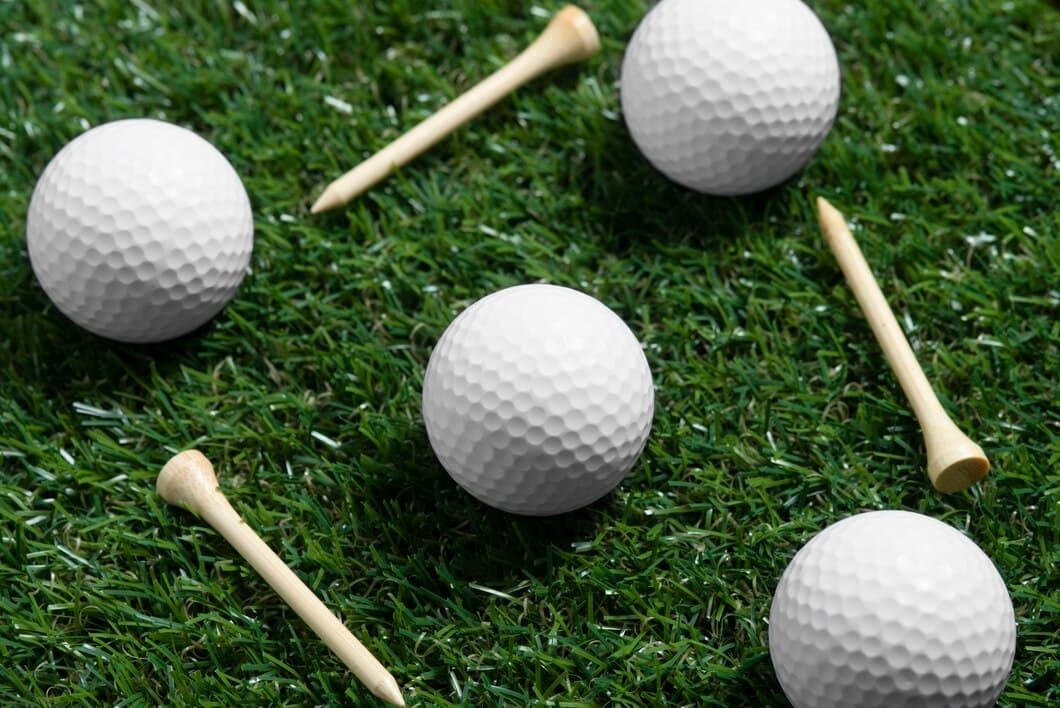Can You Touch Your Golf Ball To Identify It?
-

The Rules of Golf state that a player may not touch their ball once it has come to rest, except in very limited circumstances. There are certain penalties for touching your ball, so it is important to be aware of the rules. The most common penalty for touching your ball is a one-stroke penalty.
However, there is an exception to this rule. If the ball is in a hazard, the player is allowed to touch it to identify it. This is because it can be difficult to see the ball in a hazard, especially if it is submerged in water. Once the player has identified the ball, they must then remove it from the hazard without further touching it.
What are the rules on identifying your golf ball?
If you have lost sight of your golf ball and think you may find it in a hazard or in an unplayable location, you may need to identify your ball in order to make a ruling on your next shot under Rule 27-1. The Rules of Golf provide for two methods of identification under Rule 27-1a, which allow you to either identify your ball visually or by using your sense of touch.
If you identify your ball visually, you must be certain that it is your ball. If you identify the ball visually and then hit the wrong ball, you will have played the wrong ball under Rule 15-3a and will incur a penalty of two strokes under Rule 15-3b. If you identify your ball by touch, you may only do so when it is at rest. If your ball moves when you touch it, it is a new ball and you must correct the mistake by playing the original ball or a new ball under Rule 27-1b.
What happens if you touch your golf ball?
If you touch your golf ball while it is on the green, you may incur a penalty. Rule 16-1 states that "a player must not touch his ball with his hand or club in play, or cause it to move by any other means."
There are a few exceptions to this rule. For example, you are allowed to touch your ball if it is in a hazard, to remove loose impediments, or to identify it. However, you must not improve the lie of your ball or otherwise alter its position.
If you do touch your ball in play, you will incur a one-stroke penalty. If you touch your ball multiple times, you will incur a two-stroke penalty. In addition, if you touch your ball on the putting green, you will incur a two-stroke penalty.
It is important to be aware of the rules regarding touching your golf ball, so that you can avoid incurring a penalty. If you are ever unsure about whether or not you are allowed to touch your ball, it is always best to consult with a rules official.
When is it okay to touch your golf ball?
According to the Rules of Golf, you are only allowed to touch your golf ball in a few specific situations. These situations include when your ball is in a hazard, when it is embedded in the ground, or when it is in an unplayable lie. You are also allowed to touch your ball to clean it, but only if it is on the putting green.
If you touch your ball in any other situation, you will incur a one-stroke penalty. This penalty can be very costly, so it is important to be aware of the rules governing when you can and cannot touch your ball.
Can you move your golf ball to identify it?

Many golfers are unsure about whether or not it is legal to move your golf ball on the green in order to identify it. In fact, according to the Rules of Golf, you can only move your ball if you need to clean it, make a repair, play a provisional ball, or when the ball has come to rest in a place where you can't play it.
If you need to identify your ball on the green, you should use a coin or a ball marker to mark its position. Once you have marked the ball's position, you can pick it up and inspect it. If you are unable to identify your ball, you must replace it on the spot where it was originally found.
If you move your ball on the green without a valid reason, you will incur a one-stroke penalty.
What if your golf ball is in a hazard?
If your golf ball is in a hazard, you must proceed with caution. First, determine if the hazard is a water hazard or a bunker. Water hazards are marked with yellow stakes and are typically bodies of water, such as lakes, ponds, or rivers. Bunkers are marked with red stakes and are typically sandy areas.
Once you have identified the type of hazard, you must take steps to identify your ball. If your ball is in a water hazard, you may use a club to search for it, but you must not touch the water. If your ball is in a bunker, you may use a club to search for it, but you must not touch the sand with your hand or club.
If you are unable to find your ball in the hazard, you must take a penalty stroke and play a new ball from the previous shot location. If you are unable to identify your ball in the hazard, you must take a penalty stroke and play a new ball from the previous shot location.
If you are in doubt about whether your ball is in a hazard, you should ask the course marshal for assistance. The course marshal will be able to help you identify your ball and determine the appropriate course of action.
What if you can't identify your golf ball?
If you've searched for your golf ball but can't find it, the next step is to determine whose golf ball it is if someone else is playing. Look for a golf ball that has distinguishing features such as a logo, name, or marking on it. This will help you rule out other golf balls that are not yours. If no unique markings are found, the ball will be declared lost and will be put into play.
If you can't identify the golf ball as yours or someone else's, you must play a provisional golf ball. A provisional golf ball is a ball that is hit from the place where the original ball was hit, but it is played as a second ball in case the original ball is not found or is deemed unplayable. If the original ball is found, you must finish the hole with the original ball. If the original ball is not found, you must finish the hole with the provisional ball.
The rules for identifying your golf ball are the same for professional and amateur golfers. However, professional golfers are often more diligent in identifying their golf balls because they can be penalized if they hit the wrong ball. The rules for identifying your golf ball are also the same for men and women.
It is important to remember that you must identify your golf ball correctly to avoid being penalized. If you are not sure if a golf ball is yours, it is best to err on the side of caution and play a provisional golf ball.
What are the penalties for touching your golf ball?
In the game of golf, there are specific penalties that players may incur if they touch their golf ball. These penalties can vary depending on the circumstances surrounding the infraction, and the location of the ball on the course.
If a player touches their golf ball on the putting green, they will incur a one-stroke penalty. This penalty is assessed because the putting green is a specifically designated area where players are expected to putt the ball towards the hole.
If a player touches their golf ball in a bunker, they will incur a two-stroke penalty. This penalty is assessed because bunkers are obstacles that are designed to make the game more challenging, and touching the ball in a bunker can give a player an unfair advantage.
If a player touches their golf ball in any other area of the course, they will incur a one-stroke penalty. This penalty is assessed because touching the ball in these areas can give a player an unfair advantage by allowing them to improve the ball's lie or position.
What are the exceptions to the rule against touching your golf ball?
In golf, players are generally not permitted to touch their golf ball once it has come to rest on the course, but there are a few exceptions to this rule. One exception is when a player needs to identify their ball. If a player's ball is near another ball or object that is close to a hazard, they may need to touch their ball in order to ensure that they are hitting the correct one.
Another exception to the rule against touching one's golf ball is when a player needs to repair a damaged ball. If a ball is damaged during play, such as by a tree branch or a sprinkler head, the player may need to touch the ball in order to fix it before continuing play.
Finally, players may also touch their ball if it is in a position where it is difficult to play. For example, if a ball is embedded in the rough or buried in a bunker, a player may need to touch the ball in order to move it to a more playable location.
Frequently Asked Questions
Can you pick up your golf ball to identify it?
According to the rules of golf, you are not allowed to pick up your golf ball to identify it. You may only pick up your ball if it is in a hazard, or if you are taking a penalty stroke. If you pick up your ball for any other reason, you will incur a one-stroke penalty.
Can you mark your golf ball to identify it?
Yes, you are allowed to mark your golf ball to identify it. You can do this by placing a coin or a ball marker on the ground next to your ball. Once you have marked your ball, you may pick it up and clean it. You must then replace your ball on the exact spot where it was originally.
Can you use a rangefinder to identify your golf ball?
Yes, you are allowed to use a rangefinder to identify your golf ball. A rangefinder is a device that measures the distance to a target. You can use a rangefinder to measure the distance to your golf ball from your current location. This can help you to identify your ball if it is in a hazard or if it is difficult to see.
Can you use a golf ball retriever to identify your golf ball?
Yes, you are allowed to use a golf ball retriever to identify your golf ball. A golf ball retriever is a device that is used to retrieve golf balls from hazards. You can use a golf ball retriever to retrieve your ball from a pond, a lake, or a tree. Once you have retrieved your ball, you can identify it by looking at the markings on the ball.
Conclusion
In conclusion, while it is against the rules to touch your golf ball to identify it during play, there are certain exceptions to this rule. These exceptions include when the ball is in a hazard, or when it is necessary to identify the ball due to an unusual circumstance.
It is important to be aware of these exceptions and to follow the rules of golf accordingly. Failure to do so could result in a penalty.